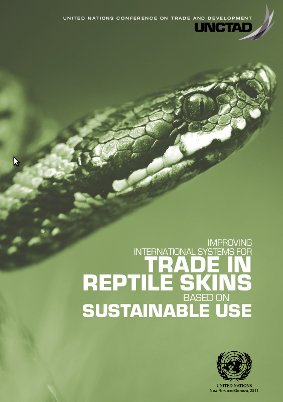 The reaping (black market) trade in reptile skins for the luxury fashion and accessories market is an openly talked about, albeit ugly, reality of the present.
The reaping (black market) trade in reptile skins for the luxury fashion and accessories market is an openly talked about, albeit ugly, reality of the present.
We know from experience, that international laws don’t really do the job. Examples are plentiful, but probably the most prominent one is that of ivory. Illegal ivory trade is according to scientists, and as reported on the BBC, threatening Africa’s elephant population.
That’s why already in 1975 the ‘Convention on International Trade in Endangered Species of Wild Fauna and Flora’ (CITES) came into force, which and now has more than 175 nations as contracting parties.
At the time, the convention was a landmark international effort to ensure the use of wildlife for international trade was not so excessive that it drove wildlife species to extinction
What to do about it is, of course far from a simple and straight forward answer.
One approach, relatively recently launched and pursued by the United Nations Conference on Trade and Development (UNCTAD)’s BioTrade project, is the creation and enforcement a traceability system for these types of skins.
The recently published UNCTAD BioTrade report ‘Improving International Systems for Trade in Reptile Skins based on Sustainable Use’ aims at:
examine the changing context within which the reptile skin trade has existed (“where we came from”), the extent of the current industry and its regulatory strengths and weaknesses (“where we are now”), and what the future can or should bring (“where we go from here”).
It seems that with that there a they are also working on something called the ‘BioTrade Designers’ Toolkit’, presumably a more hands-on approach targeting ‘business’, i.e. designers, retailers etc..
The toolkit will analyse materials stemming from biodiversity. The general analysis will include information about the species in its various habitats, while the in-depth analysis will focus on one geographic area that can provide specific focus with regards to the species interaction with the ecosystem, the communities as well as the legal and policy framework.
Further information:
- Report ‘Improving International Systems for Trade in Reptile Skins based on Sustainable Use’ (PDF download)
- UNCTAD BioTrade project website.
- ‘Convention on International Trade in Endangered Species of Wild Fauna and Flora’ (CITES) website.

